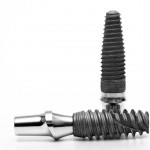
Traditionally dental implants have been place following the removal of compromised teeth and a suitable period of healing. However, there is interest in shortening the treatment time between tooth extraction and implant placement, or having the implants inserted during the same session as the teeth are extracted. The main aim of this review was to estimate the survival rate of implants placed in fresh extraction sockets and immediately restored, after at least 1 year of function.
Methods
Searches were conducted in the Medline, Embase and CENTRAL databases this was supplemented by hand searches of the journals; Clinical Implant Dentistry and Related Research, Clinical Oral Implants Research, Implant Dentistry, European Journal of Oral Implantology, International Journal of Oral and Maxillofacial Implants, International Journal of Periodontics and Restorative Dentistry, Journal of Clinical Periodontology, Journal of Periodontology, and Journal of Prosthetic Dentistry.
Randomised clinical trials (RCT), controlled clinical trials (CCT), case-control studies, and prospective case series (PCS] involving at least 10 patients with a follow up period of at least 1 year were considered.Two reviewers independently selected studies extracted data and assessed study quality.The effect study design, risk of bias, prosthesis type, type of loading (occlusal or non-occlusal), type of incision (flap or flapless), presence of infection, and grafting material on 1-year implant survival (IS) was statistically evaluated. A meta-analysis of studies comparing immediately restored implants placed in fresh post-extraction sockets versus healed ridges was conducted.
Results
- 44 studies involving a total of 1170 patients and 1974 implants were included (6 RCTs; 3 CCTs ; 35 PCS )
- 28 studies were considered to have a low risk of bias (5 randomised, 23 non-randomised) the remainder were considered to have a high risk of bias.
- There was a significant better outcome in favour of the implants placed in healed ridges (99.4% of implant survival) compared with post-extraction implants (95.6% of implant survival) (p = .004).
Conclusions
The authors concluded:
Based on a sample of nearly 2000 implants, the mean weighted implant survival of immediately restored implants immediately placed in extraction sites in the esthetic region is 97.60%, suggesting that such clinical approach is well documented and can be successfully adopted in order to minimize the treatment time. However, the meta-analysis showed that the outcome of immediate implants resulted inferior to that of implants placed in healed ridges. Therefore, parallel to the advantages brought about by immediate implant placement and restoration, the patient and the practitioner must be aware of the risks that such treatment may imply.
Comments
This review has searched 3 major databases but has chosen to include both randomised and non-randomised studies. As non-randomised studies have potential for greater bias this should be taken into consideration when considering the findings. The 2010 Cochrane review (Esposito et al) of implant placement in fresh extraction sockets was restricted to RCTs. They included 7 RCTs in all and concluded that:
There is insufficient evidence to determine possible advantages or disadvantages of immediate, immediate-delayed or delayed implants, therefore these preliminary conclusions are based on few underpowered trials often judged to be at high risk of bias.
This new review only includes one of the studies from the Cochrane review. Another more recent review (Dental Elf 12th Dec 2014) that also included both randomised and non-randomised studies demonstrated a higher failure rate in fresh socket than in healed sockets. It also needs to be considered that this review only looks at survival at one year while other studies have demonstrated good long term survival rates for traditionally place implants.
Links
Del Fabbro M, Ceresoli V, Taschieri S, Ceci C, Testori T. Immediate loading of postextraction implants in the esthetic area: systematic review of the literature. Clin Implant Dent Relat Res. 2015 Feb;17(1):52-70. doi: 10.1111/cid.12074. Epub 2013 Apr 22. PubMed PMID: 23607327.
Esposito M, Grusovin MG, Polyzos IP, Felice P, Worthington HV. Interventions for replacing missing teeth: dental implants in fresh extraction sockets (immediate, immediate-delayed and delayed implants). Cochrane Database of Systematic Reviews 2010, Issue 9. Art. No.: CD005968. DOI: 10.1002/14651858.CD005968.pub3.

Post-extraction dental implants had higher failure rate. http://t.co/vtCa4oHMwk
Dental Implants in fresh sockets have poorer survival. http://t.co/vtCa4oHMwk
Immediate dental implants have higher failure rate. http://t.co/vtCa4oHMwk
Don’t miss- Dental Implants placed in fresh sockets have poorer survival http://t.co/vtCa4oHMwk
[…] Dental Elf – 8th Jun 2015 – Dental Implants placed in fresh sockets have poorer survival […]